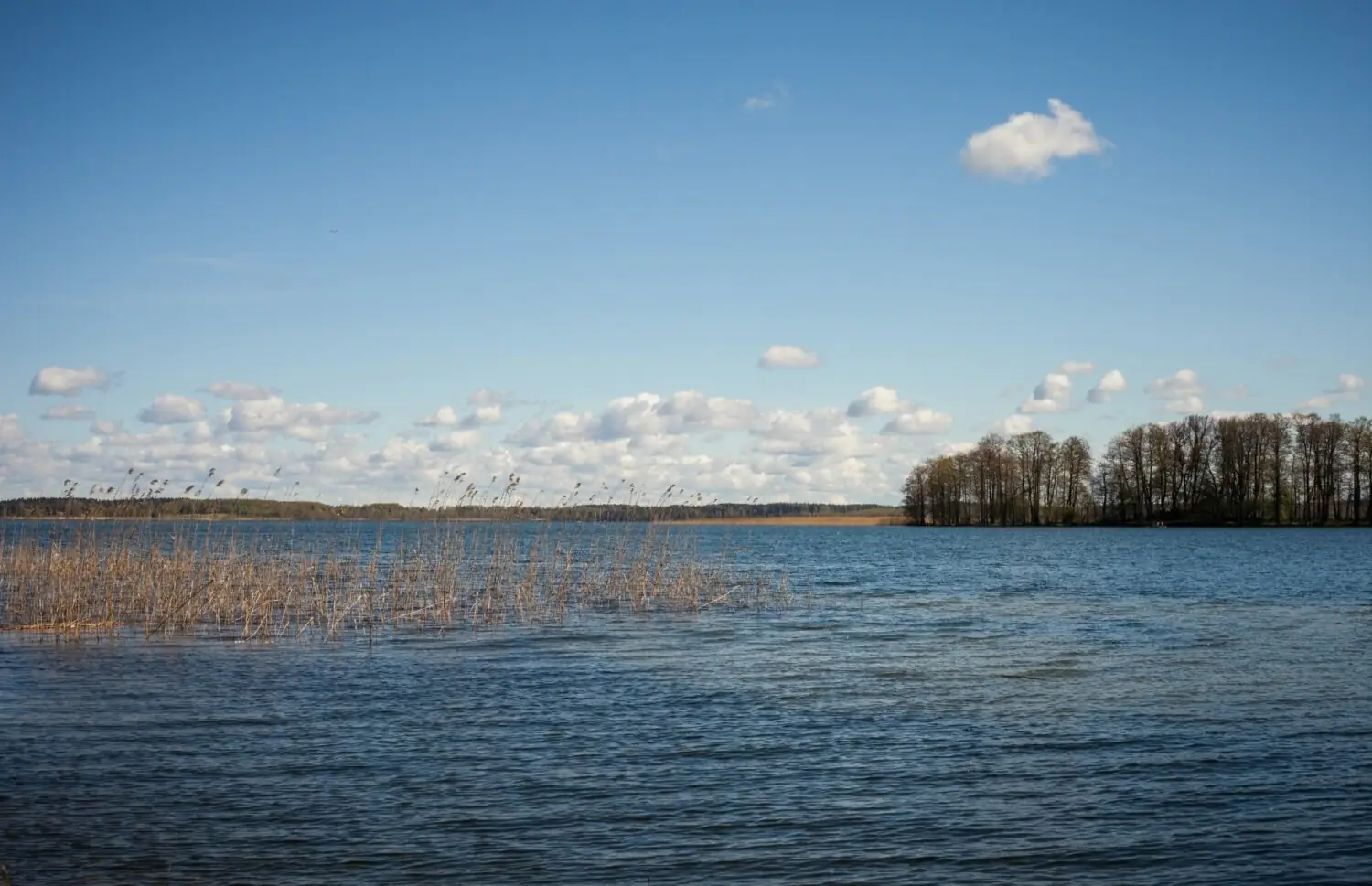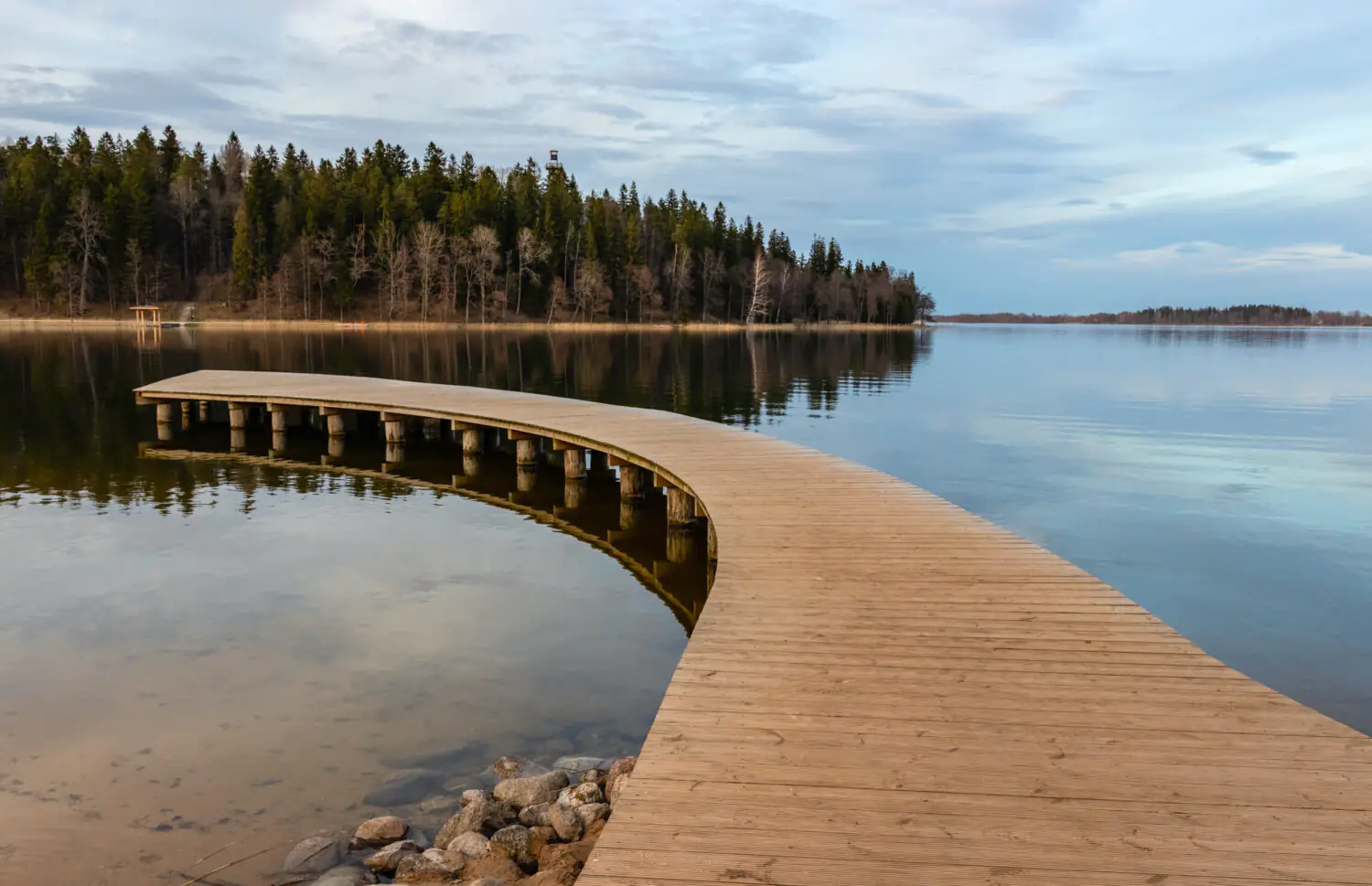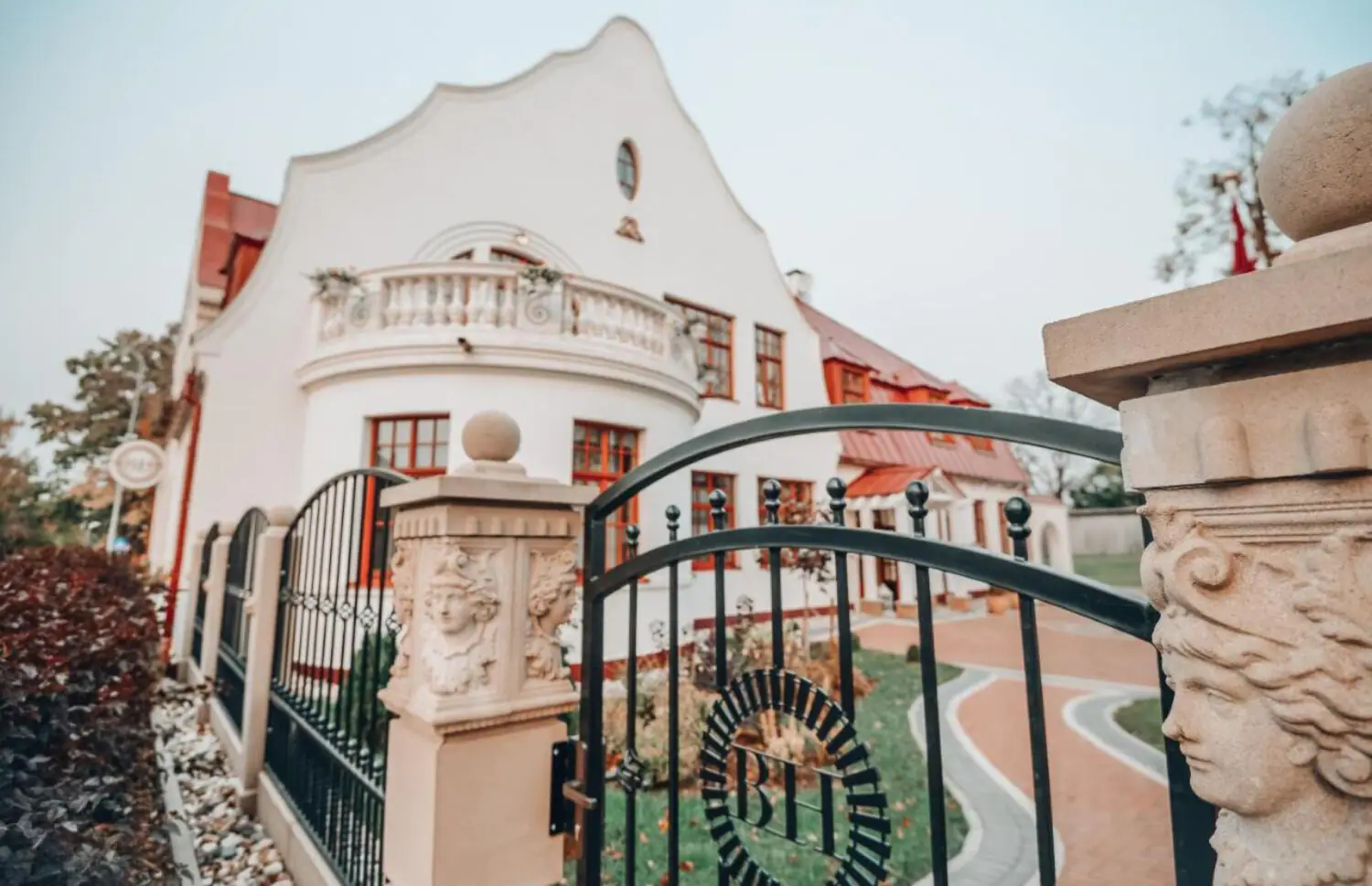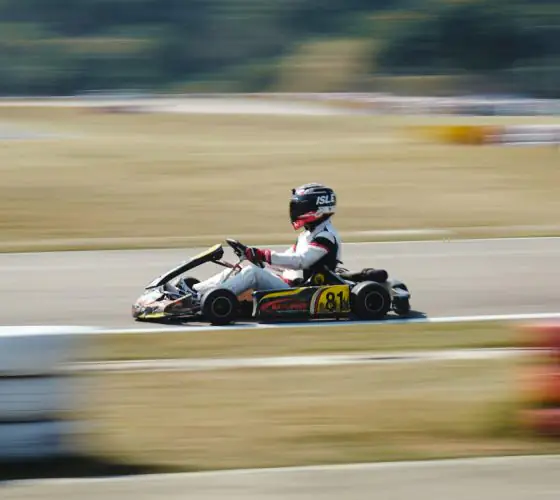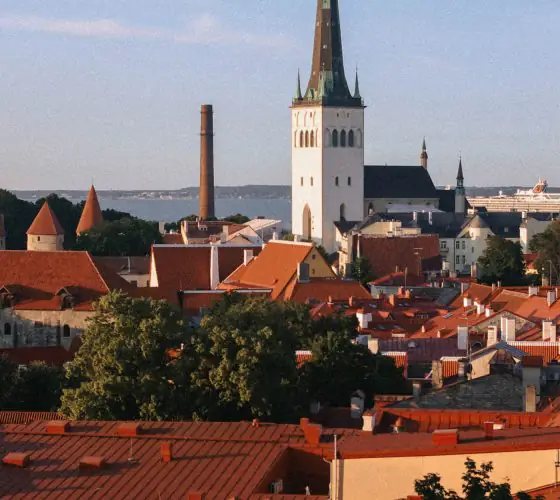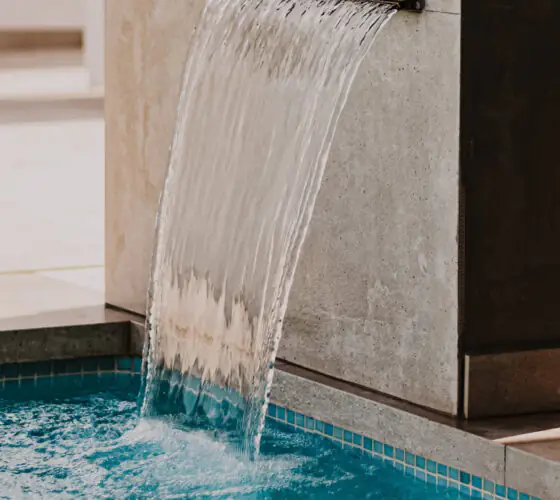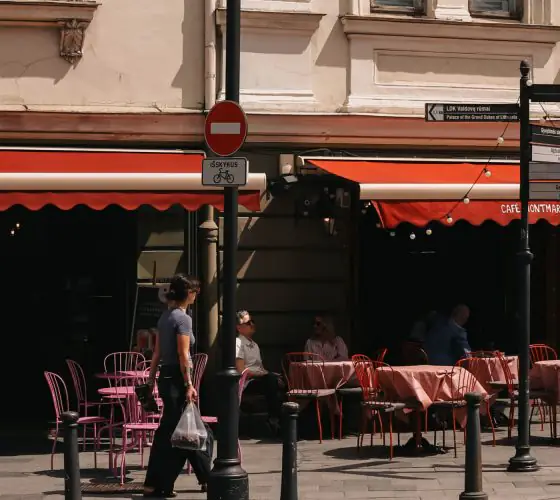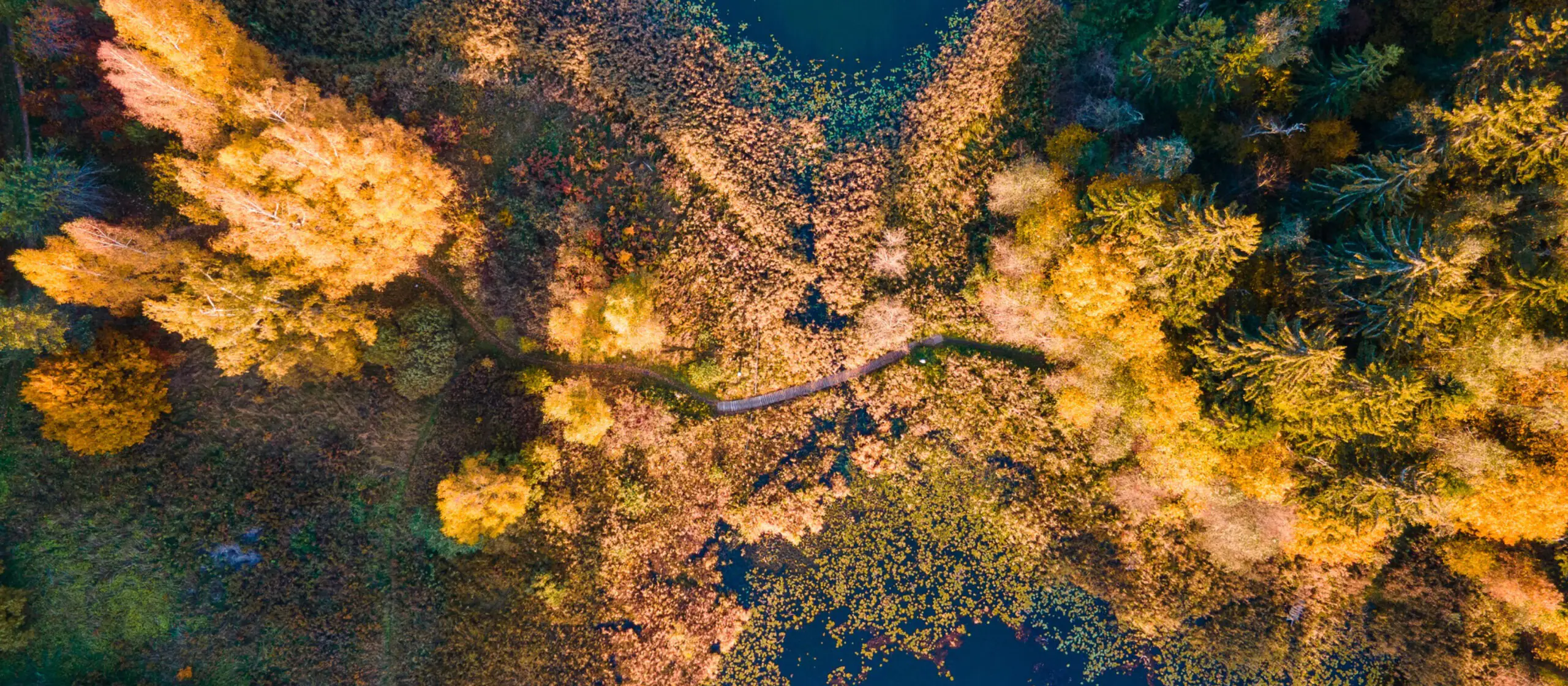
The city of Alūksne lies on the shores of one of the country’s most beautiful lakes. The city’s current logo is an apt reference to its location near the water’s edge and its name in Latgalian–the word ‘Alūksne’ reflects in the blue waters of the lake and the reflection reads ‘Olūksna’. The modern visual identity tells the unique story of the place that has preserved its strong cultural connection to Latgale, one of the Historical Latvian Lands. Its proximity to the Estonian and Russian borders–Alūksne is indeed closer to Tartu and Pskov than it is to Riga–is also a major factor that has defined the life of the city’s and district’s community.
This is also one of the country’s least densely populated areas. Less than half of its population lives in Alūksne. It is a land of forests that are rich in wildlife, so don’t be surprised if the first local you meet on your way to the city is an elk crossing the road! The local lake is used for eel farming (and it is a known fact that eels can only live in clean water) and you can often see roe deer grazing along the banks. By all means, no matter if you’re planning a holiday trip or permanently moving to Alūksne, it will be a perfect opportunity to reconnect with nature.
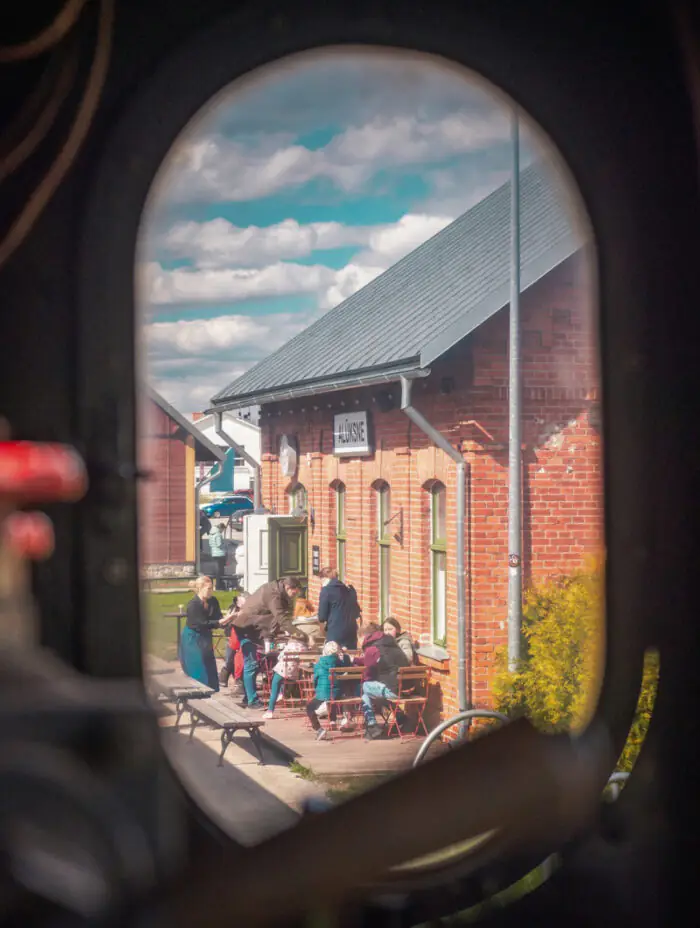
Three ways to get to Alūksne
If you’re driving from Riga, the fastest and easiest way to get to Alūksne is the popular A2 highway. The highway runs in an almost straight line, so it will take you around three hours to get to your destination.
If you prefer traveling by bus, there is a regular bus service from the Riga Central Bus Station with buses running four to six times a day. It will normally take you more than four hours to get to Alūksne by bus, but you’ll have a nice opportunity to enjoy the beautiful scenery from the comfort of your seat as the farms and fields glide by.
The most attractive way to get to Alūksne is to take a ride on a narrow-gauge railway line running from Gulbene. A train of several coaches runs between the two cities every day. You’ll have almost an hour and a half to take in the romantic views from the coach window and enjoy the train’s iconic interiors. If you want a special ride with the famous steam locomotive, you’ll need to plan your trip for Saturday and book your tickets in advance. For an up-to-date train timetable, please visit Alūksnes Bānītis.
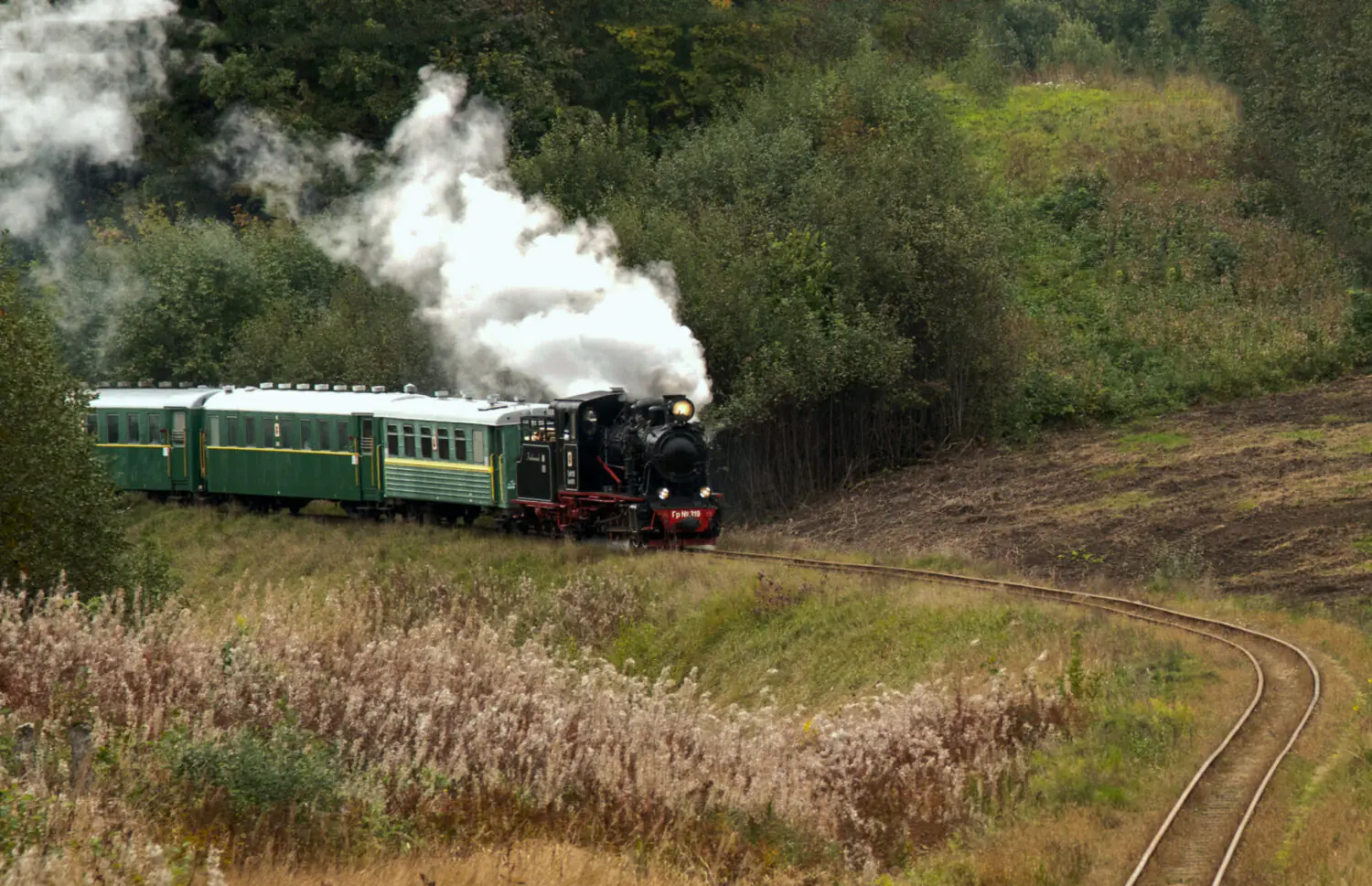
At each of the two terminal stations of the narrow-gauge railway line there are museums dedicated to the history of railways in Latvia. The museum in Gulbene has a larger collection, while Alūksne has a smaller museum that provides a more intimate setting: once you step inside, you feel as if you have just entered a train coach. The museum building is pretty hard to miss as it sits just outside the railway station. Be sure to look into the museum shop for apparel or gifts with the logo of the city or the narrow-gauge railway.
The best things to do in the city: coffee, beer and ‘not-your-usual’ profiteroles
One of the most pleasant discoveries about Alūksne is that despite being a small city, it boasts a variety of very decent cafés and local breweries. Yet, there is a catch: most of the city’s establishments are only open during the summer season.
The former railway station building houses a most congenial establishment: TVAIKS × OGLE is a café/cultural space where they arrange film viewings and even small concerts. The venue is open six days a week (except Monday).
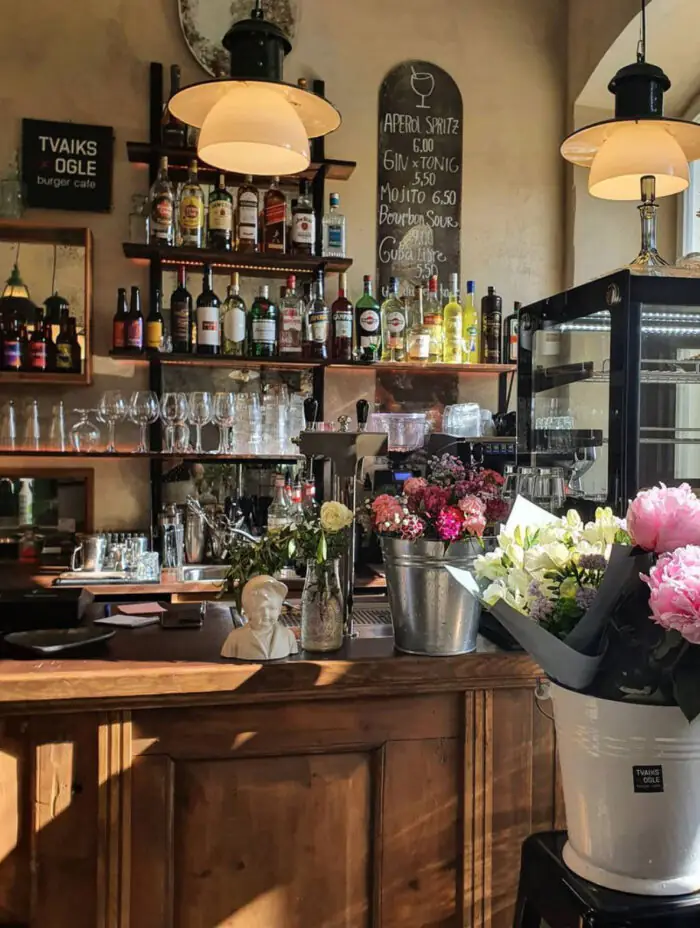
instagram.com/tvaiksogle
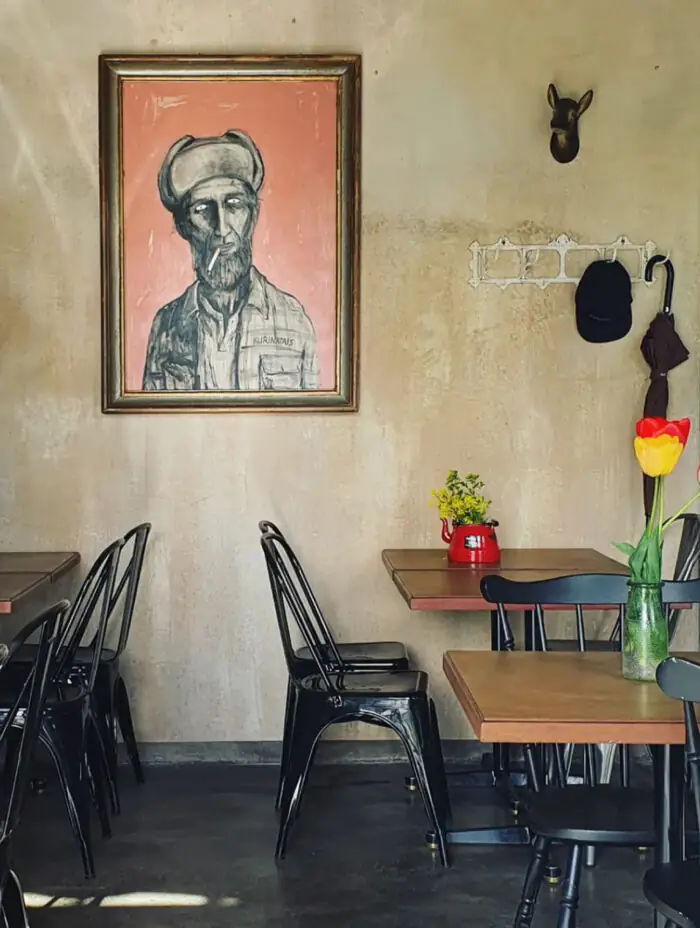
instagram.com/tvaiksogle

instagram.com/tvaiksogle
Not far off, in 5, Tālavas street, a tap room to a local brewery opened this summer, as well as the Zutis market where you can enjoy one of the local iconic dishes–big eels farmed from Lake Alūksne.
One of the most unusual local foods is called Profitrolli. But don’t let the name fool you–this is nothing like your usual profiteroles, a dessert made from choux pastry and filled with curd vanilla cream (if that’s what you want, try the Vecrīga cakes). What you get here is small lumps of dough fried in lard with a bowl of meat broth sprinkled with garden herbs. If you still have room for dessert, try an iconic local favorite–the Diena un nakts chocolate cake served at the cafe of the same name.
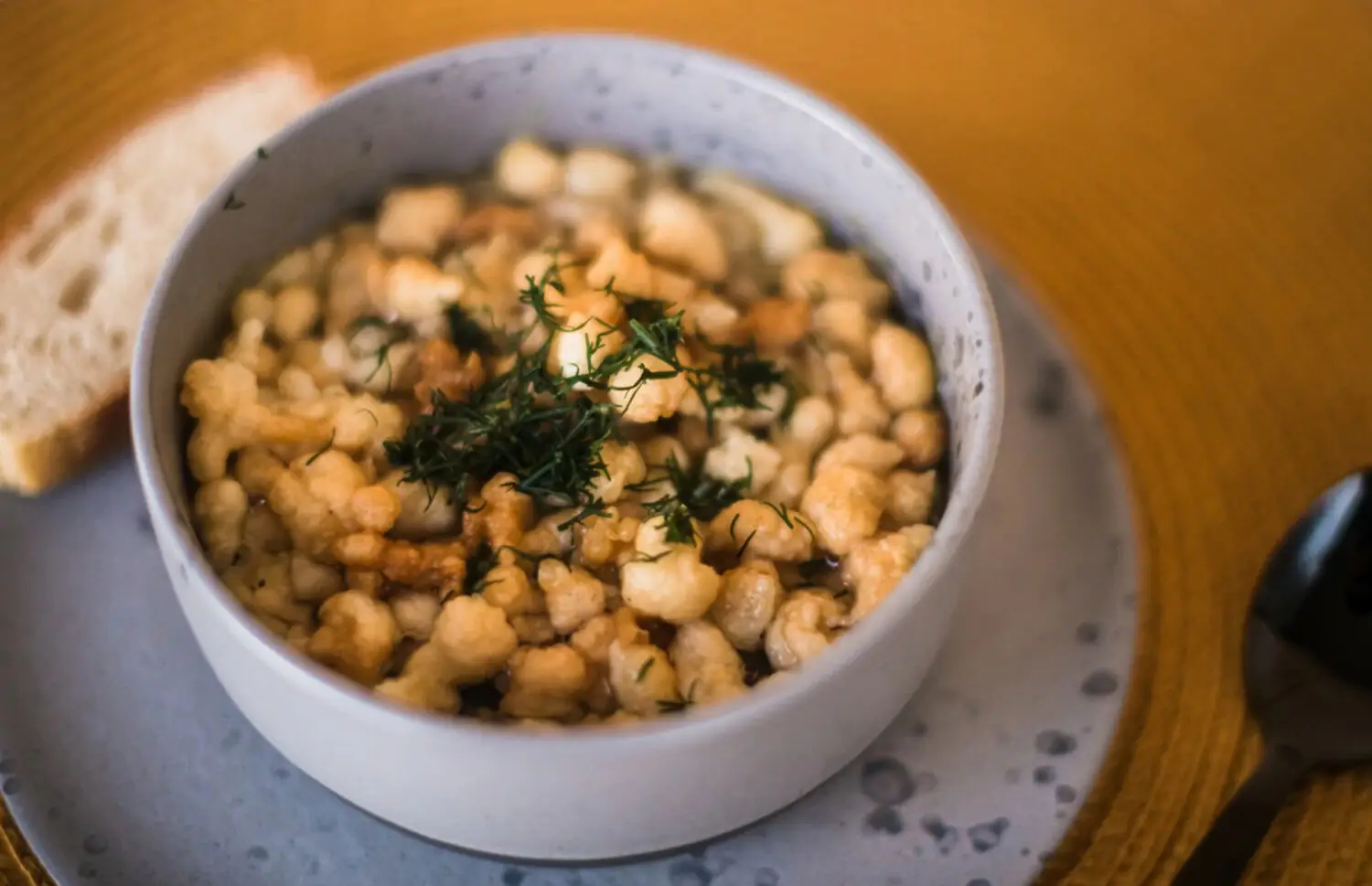
A church, a beach, a park, a cemetery and boathouses
Just across the street from the café where we’ve just had dessert, there is the city’s oldest Lutheran church that was built in 1788, and a small building that houses the Ernst Glück Bible Museum and an information centre.
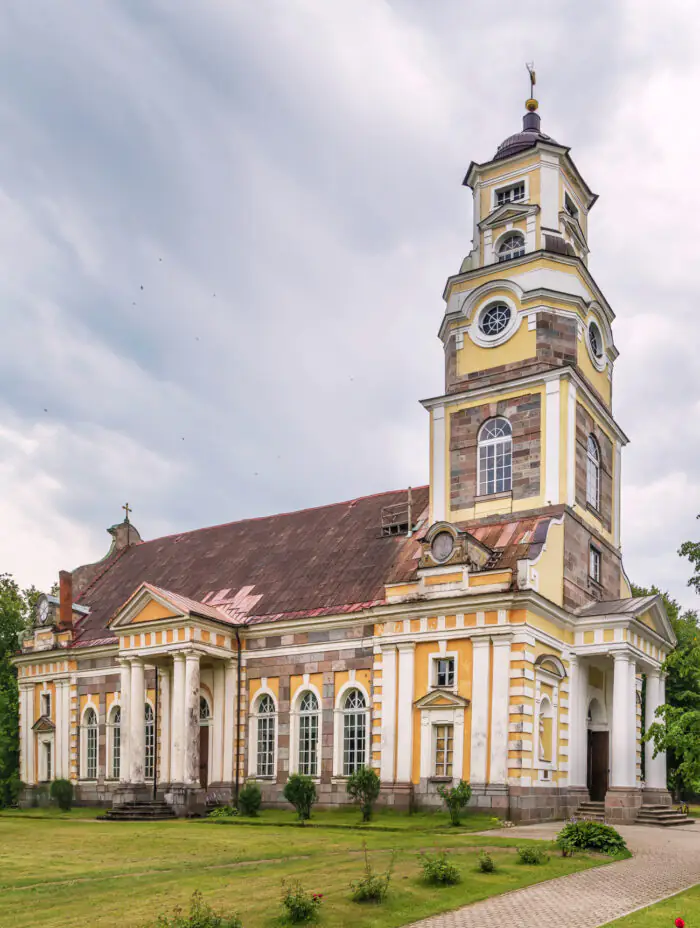
stock.adobe.com
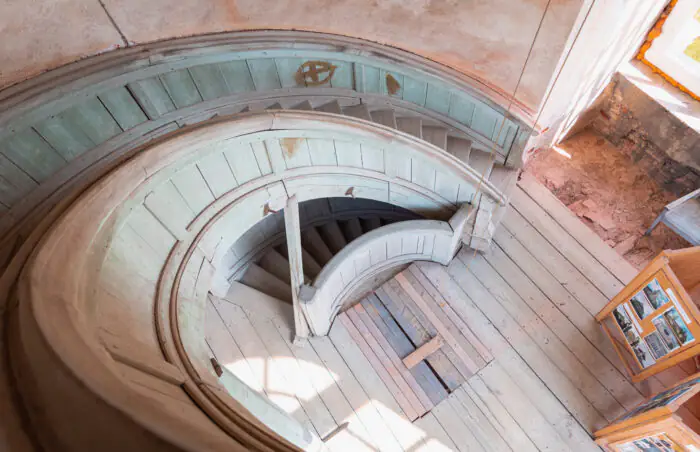
facebook.com/visitaluksne
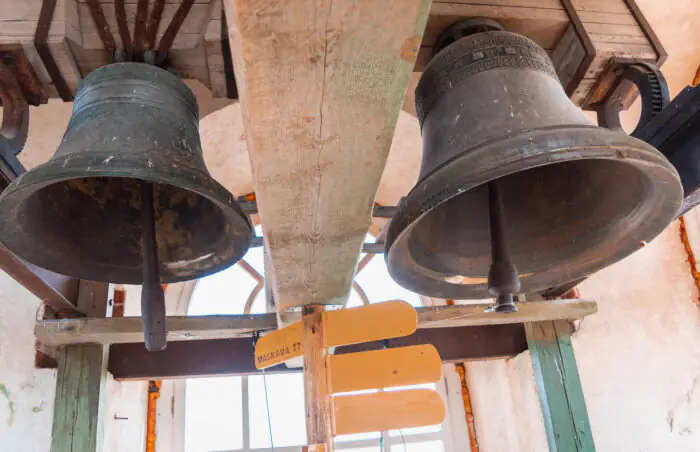
facebook.com/visitaluksne
Johan Ernst Glück is famous as the first person to translate the Bible into Latvian, a project he has been passionately working on in the 1680s. However, very few know that young Marta Skowrońska, the future Catherine I of Russia, lived in Glück’s house as a servant or a foster daughter. During the Great Northern War, the Russian army raided the area and took many local residents captive, including the famous scholar and translator and young Marta.
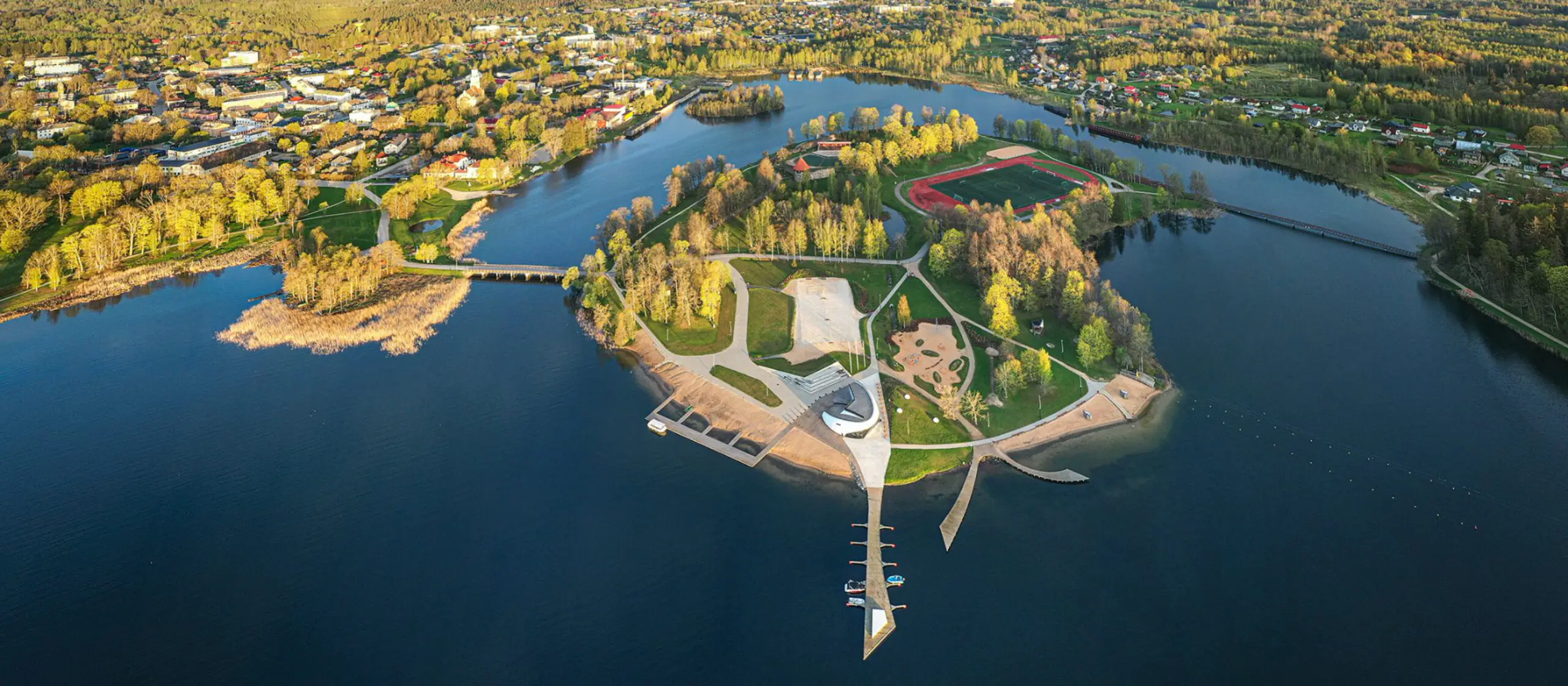
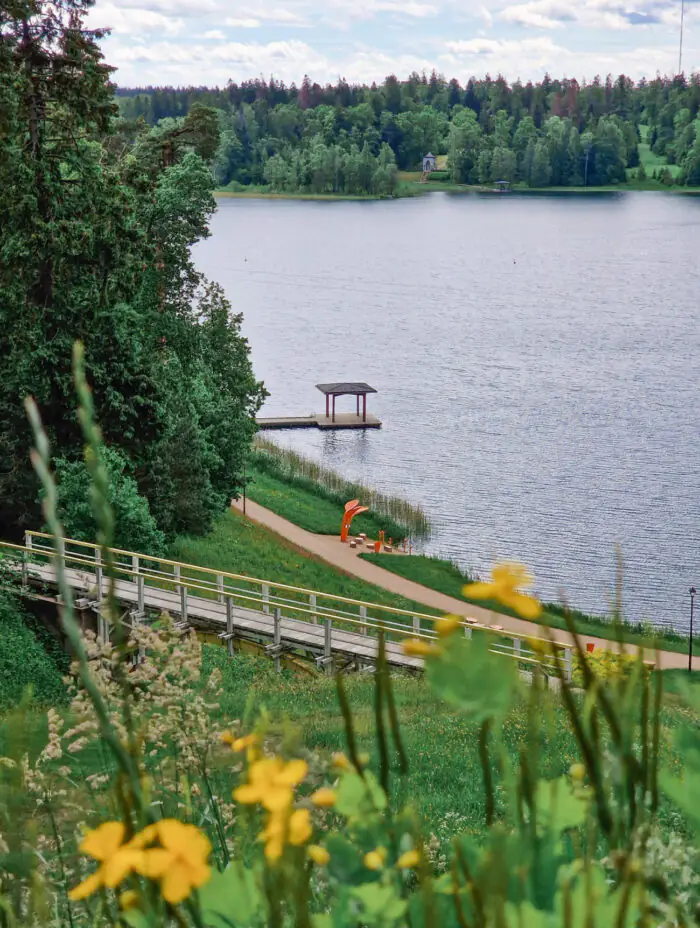
The area’s urban development projects have used nature-based solutions that factor in the lake and local environment. A major project for the renovation of the main beach and the boat piers was implemented in 2016-2018 on Pilssala (Castle Island). Another of the project’s highlights was an impressive building inspired by the aesthetics of the Space Age (a period of space exploration that started in 1957 and has been regarded as a major influence for the overall cultural landscape). The project was developed by Nams, Latvia’s leading design company.
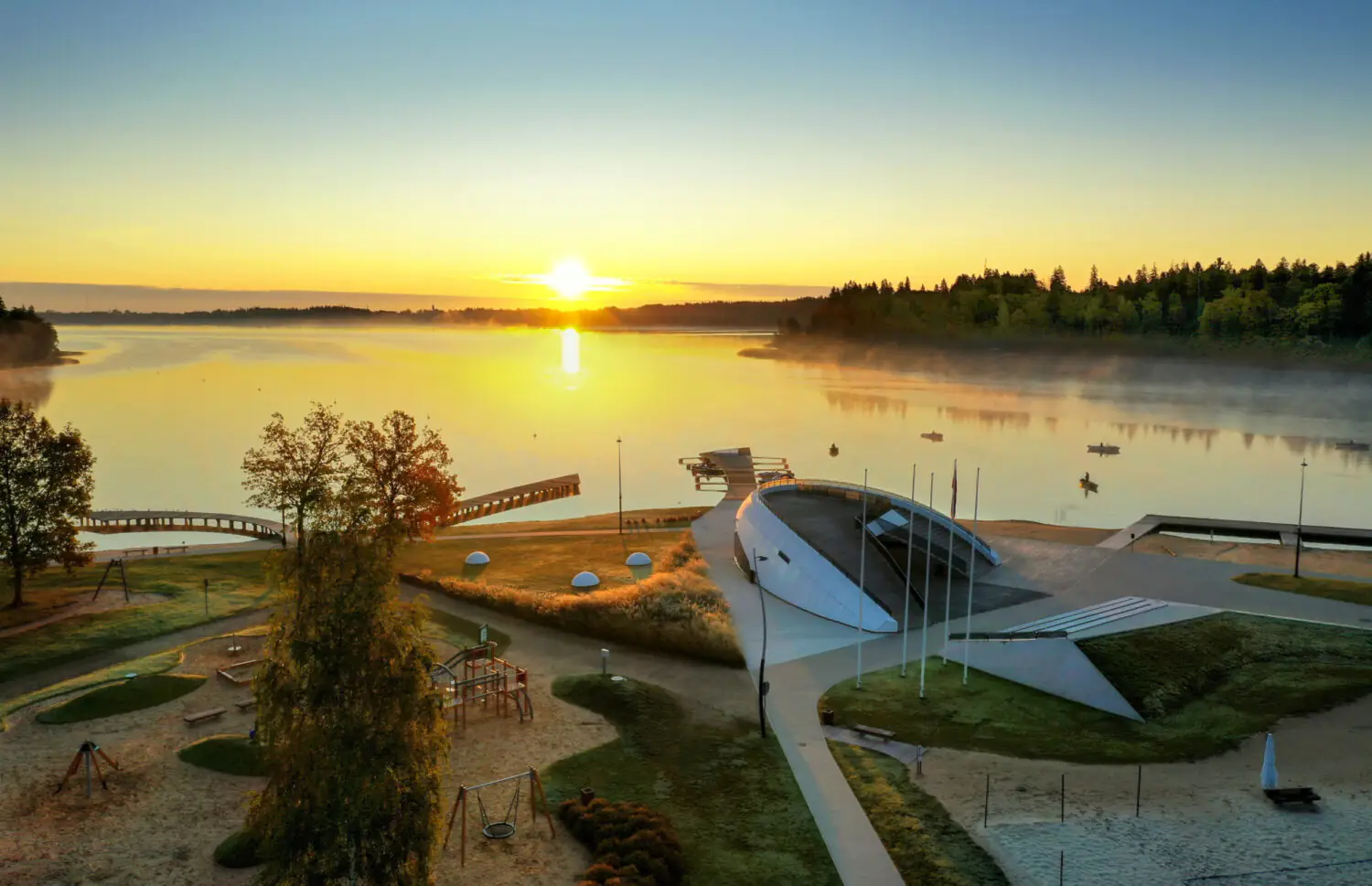
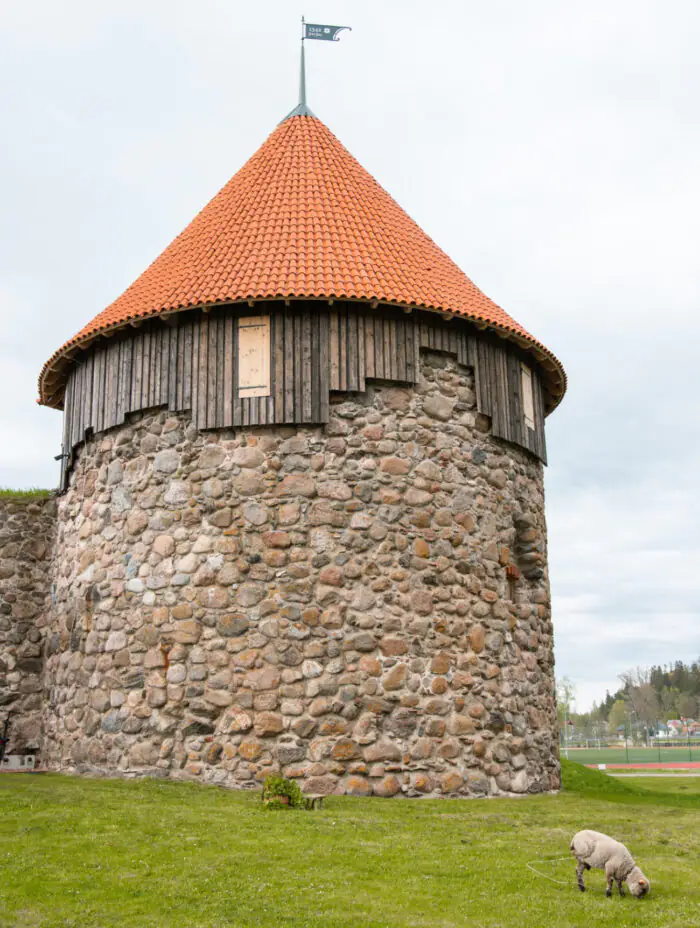
The Castle Island now hosts the headquarters of ALJA (an environmental authority you’ll need to contact if you need a fishing license), a café with a great view and boat rental station. From here, it is just a couple of minutes’ walk to the ruins of a Medieval castle. Or, if you fancy a longer journey, you can take the lakeside path (Ezertaka) that leads to the wooden watchtower. Besides, this place offers the best view of the city and its surroundings.
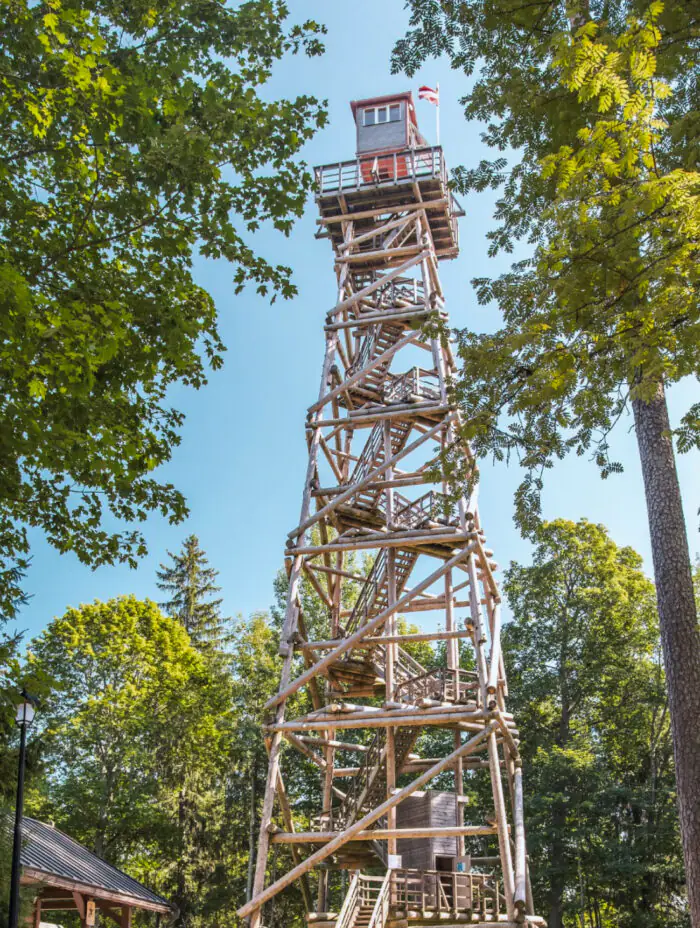
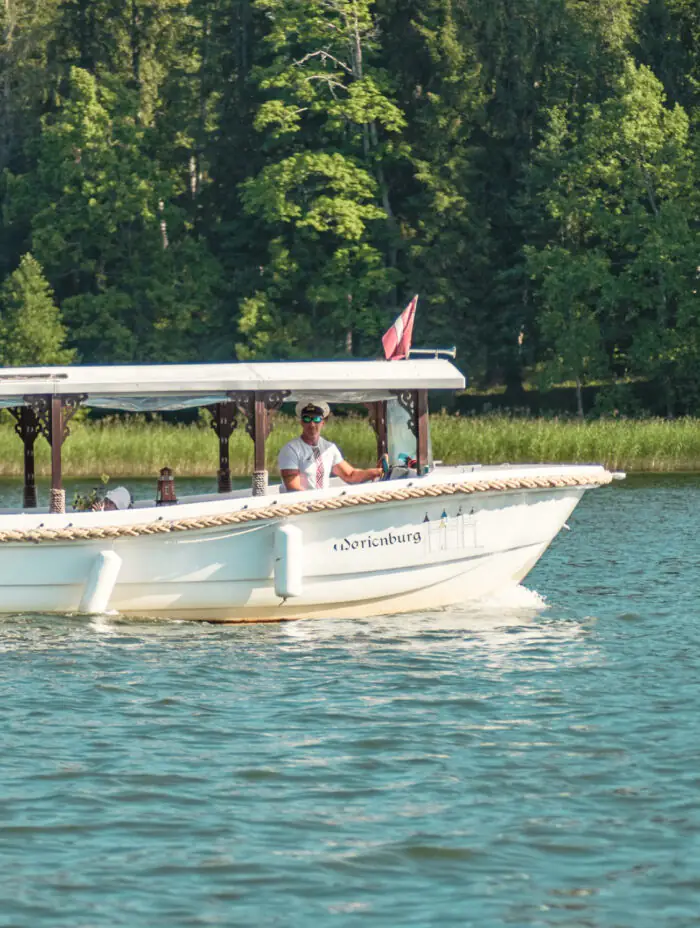
In close proximity lies the Great Cemetery (Lielie kapi), one of the city’s most romantic spots. With its undulating landscape, the towering trees and the lake behind, it is clearly one of the most magnificent cemeteries in Latvia. If the idea of graveyard tourism doesn’t seem quite appealing to you, or if you just don’t feel like climbing up the hill, there is an alternative option: you can visit the park near the Neo-gothic manor (Alūksnes Muižas Parks). A walk in the park would be a pleasant unstressful way to explore the history of the place by perusing the numerous information boards. The park occupies a large part of the city’s area, so you need to plan for at least two hours. By the way, the mansion houses a museum dedicated to the history of the place and the region. Its collection has been gradually updated, so the museum now features both renovated halls and the historic interiors. In the basement, there is a display of monuments preserved from the Soviet era.
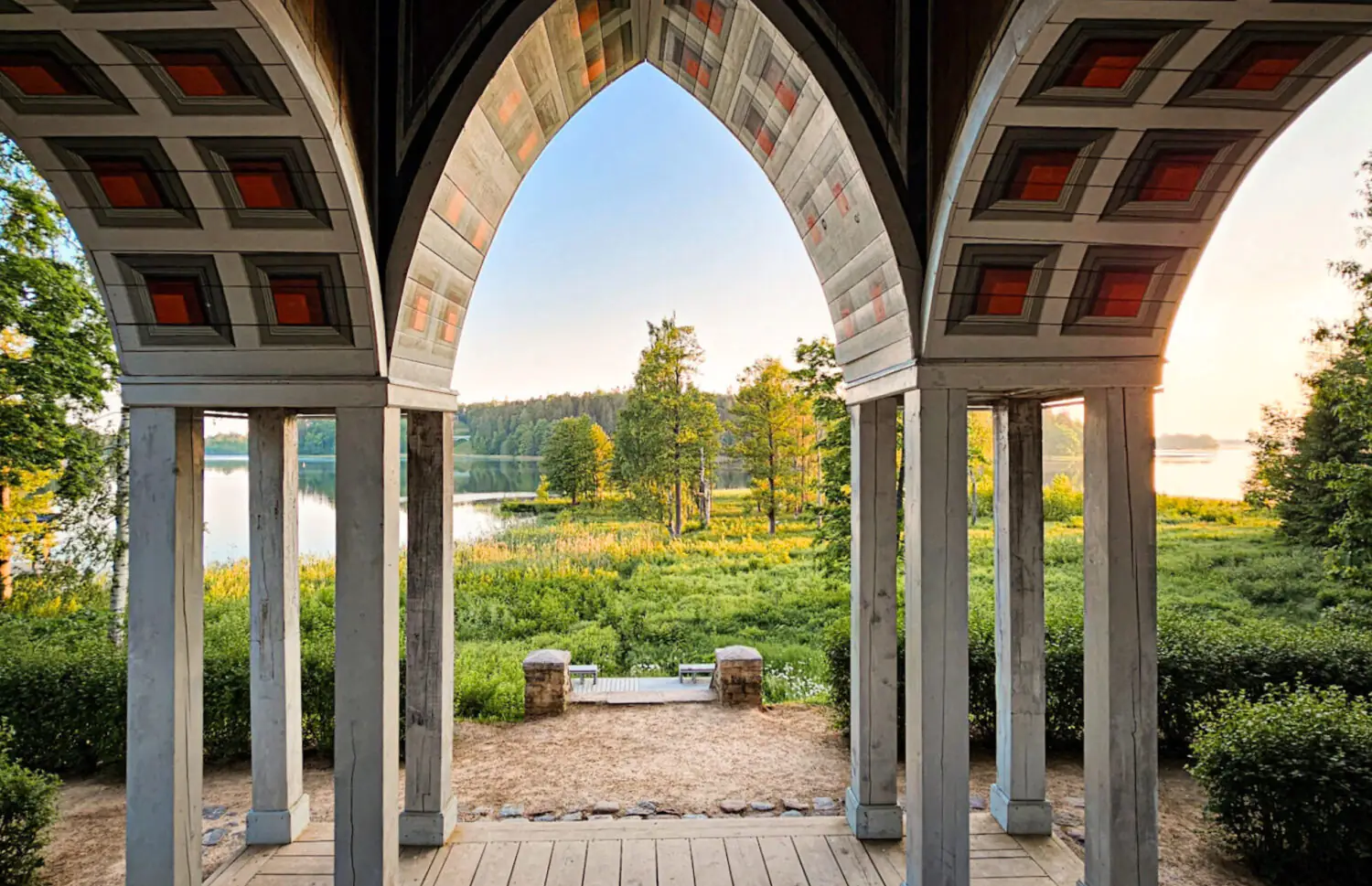
visitaluksne.lv
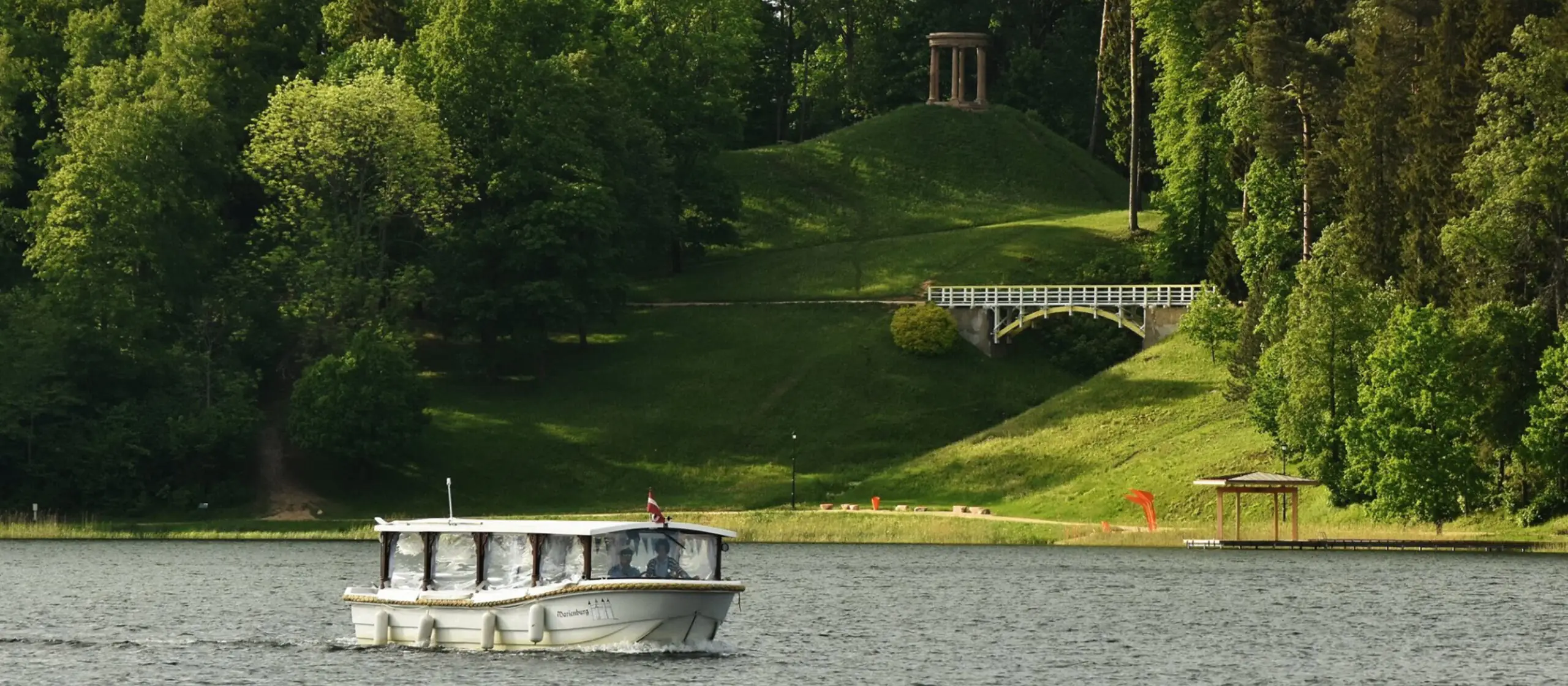
Alūksne’s boathouses are an important element of the urban environment and an integral part of the city’s identity. You can hardly imagine Alūksne without its famous boathouses. As the life of Alūksne’s community has always revolved around the lake, building houses on the water was a most logical choice. On the ground floor of a boathouse there is usually a shed or garage to store the boat, and on the first floor there is a small apartment with a couch and a composting toilet. And, most importantly, a large window overlooking the lake. In the summer months, these houses are available for rent.
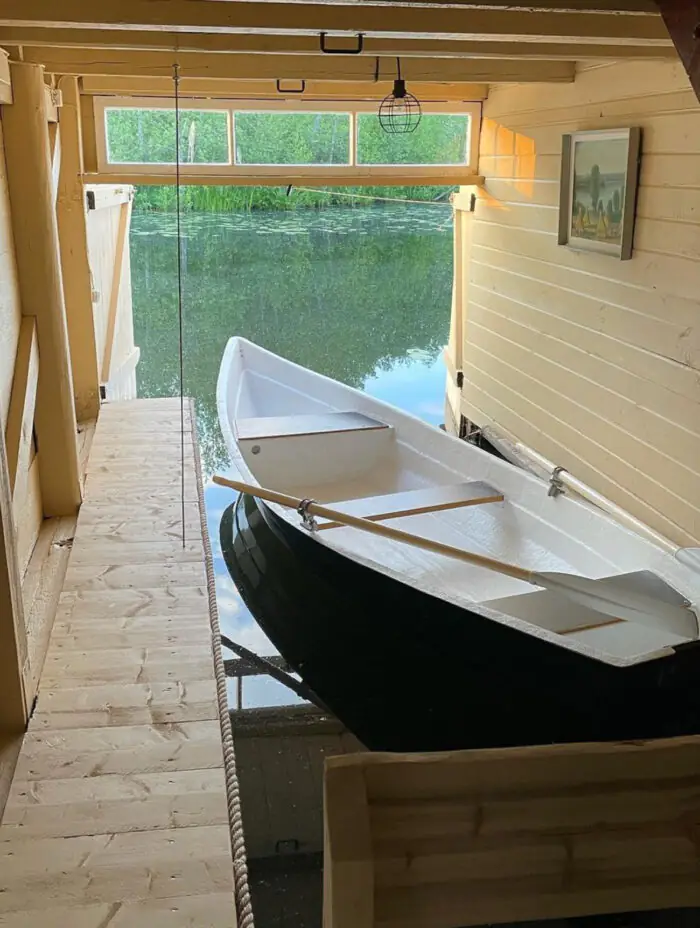
instagram.com/laivu_maja_ezerkrasti
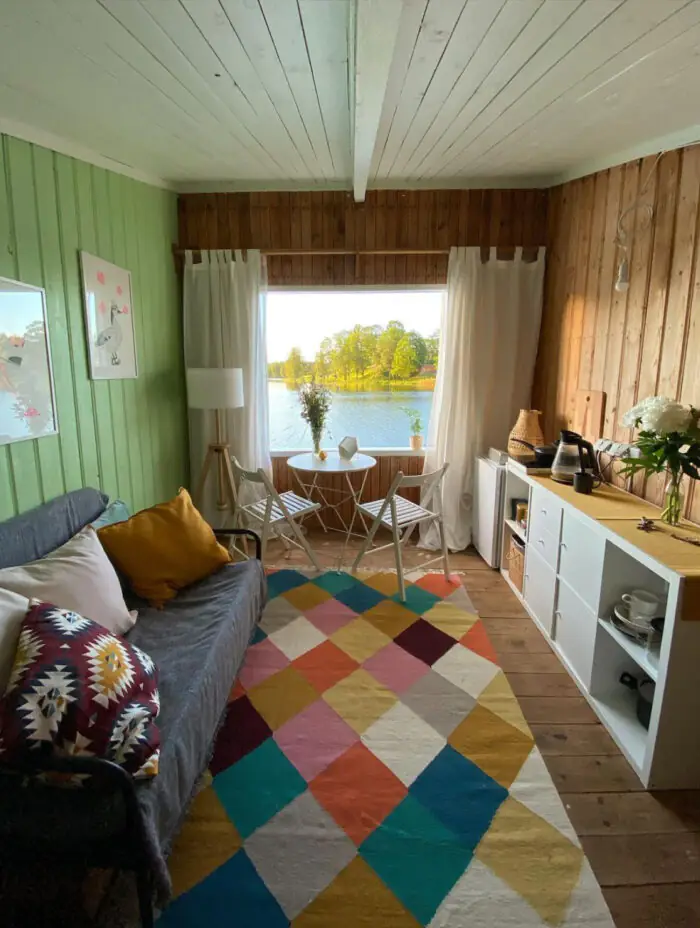
instagram.com/laivu_maja
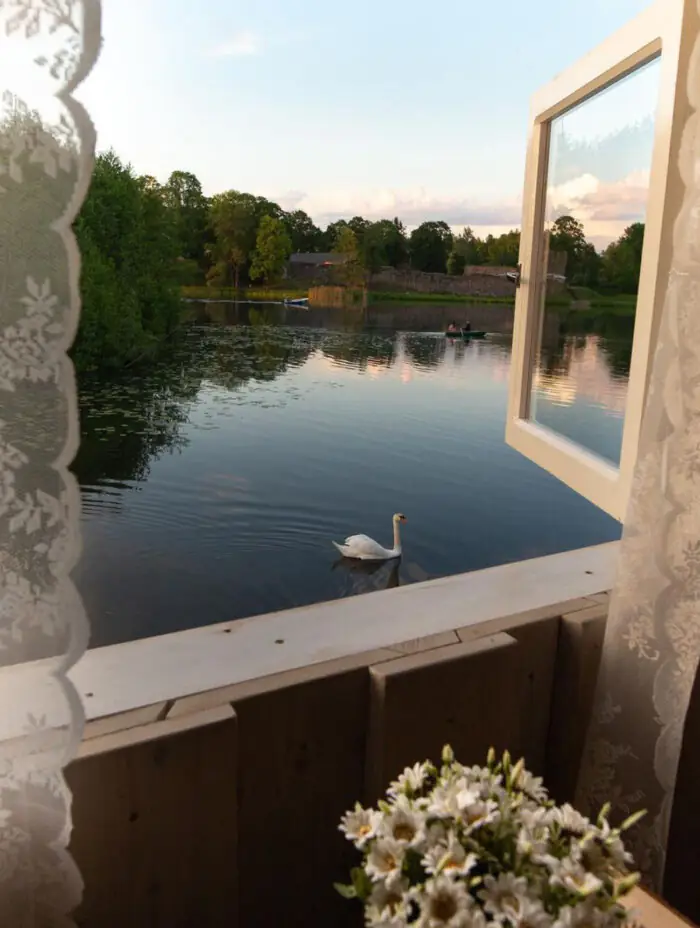
instagram.com/laivu_maja_ezerkrasti
Where to stay Alūksne
Living in a house on the water might not be every person’s dream, especially if you consider the negatives, such as mosquitos, the sound of the waves and the humidity. Not to worry: there are lots of other accommodation options in the city to match your idea of a comfortable stay, from luxurious hotels with prices starting at € 120 per night for a double room to spacious apartments in the city’s centre that you can rent for €20- €40 per night during the summer season.
One of city’s most comfortable and atmospheric hotels is located near the railway station and is aptly named Bahnhofs (from the German word ‘Bahnhof’ which means ‘railway station’). It occupies a 1912 building that was commissioned by baroness Helēna von Vietinghoff.
The outdoor recreation lovers will appreciate staying in a guesthouse or at the Jaunsetas campsite that is situated just a few feet off the bank of the lake.
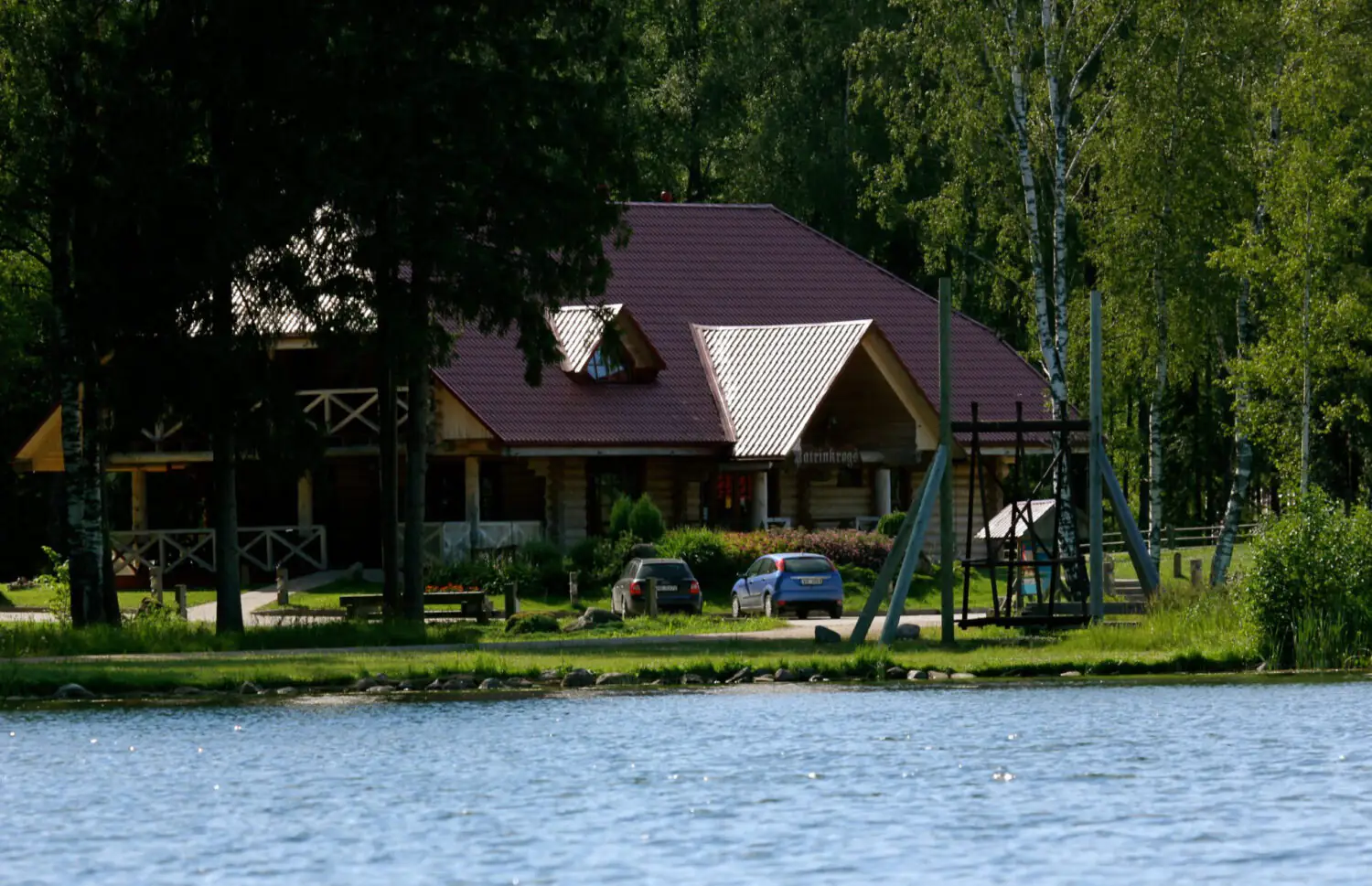
facebook.com/Jaunsetas
If you fall in love with the city and decide extend your stay, you need to know that an apartment with a floor area of roughly 50 m² will cost you between €20,000 and €30,000, while houses are sold at around € 45,000.
I may appear that Alūksne is only worth visiting in summer, when all of the city’s best venues are open, but don’t rush to conclusions. Indeed, the city has less to offer in winter, yet the colder season is the best time to enjoy the beauty of the local forests covered in snow. The shores of the lake are edged with spruce forests, and if you go for a walk on a snowy day, you’ll feel as if you’ve stepped into a winter wonderland with a canopy of snow-covered spruce branches and the glassy surface of the frozen lake below.
For those who are ready to learn more about the architecture and urban environment of Aluksne, we have prepared a separate guide.

